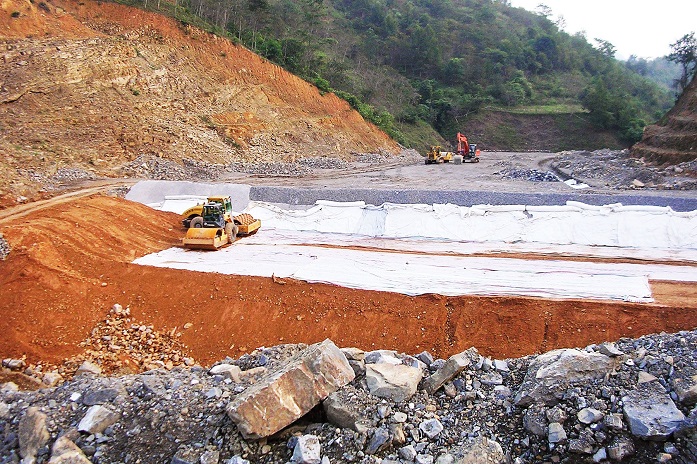Renewed global concern about the risks of tailings dam failure is accelerating a revolution in the use of automated sensors to generate big, real-time data to better monitor and manage these facilities, according to SRK Consulting.
“The need for knowing more about tailings dam conditions – and in real time – has become a major focus within the mining sector, demanding a step change in the way we collect, process and interpret data,” Lyzandra Boshoff, Principal Engineering Geologist at SRK Consulting, said. “As part of these efforts, SRK has been rolling out initiatives using automated vibrating wire piezometers (VWPs) on tailings facilities.”
Boshoff highlighted the particular significance of seepage and the associated pore pressure regime within a tailings facility as a vital aspect of the integrity and stability of the structure. This has conventionally been tracked by manual standpipe piezometers whose performance, while accurate, depends on the quality of installation and aftercare, she said. And, of course, manual data collection is subject to human error.
“This means expending considerable effort for relatively little data, which may often not exactly reflect the current situation by the time the information reaches the engineer for analysis,” she said. “Even the automated sensors using vibrating wire technology tended to rely on manual data collection from the logging devices connected to the sensors.”
This is now changing as many telemetry hardware developers have improved their wireless capability and cloud technology to upload and store data, allowing data to be immediately accessed by engineers and management.
“This has changed the landscape of data flow and interpretation, as well as the potential size of the datasets that can be generated,” she said. “SRK has been at the forefront of rolling out automated VWP networks, using logging systems that can send data wirelessly to cloud-based databases and can then be visualised and analysed in real time.”
Among the technological innovations the company is developing is a customised database and visualisation platform specifically for VWP data. This includes built-in, automated validation and interpretive tools to automate some of the routine engineering interpretive work. It builds upon available software technologies to create a solution that is customised to the field of tailings dam management, while also presenting opportunities for applying the principles in a range of disciplines.
The datasets generated by VWP networks can be significantly large, depending on the frequency at which data is collected. Conditions on site would determine the detail required for tracking where potentially adverse circumstances may develop, the company said.
“These VWP networks are also useful when needing to confirm whether the mitigation measures in place are having the desired effect,” Boshoff said.
Applying these technologies, SRK says it has been able to review the impact of construction process and other site activities and incidents on pore pressure responses, and analyse the impact of depositional patterns on the seepage flow regime within a facility.
“For the first time, we can see and correlate in real time what we have always predicted using models and assumptions,” Boshoff said. “Harnessing the power of big data, we can now test our assumptions and substantially raise the confidence of our observations. With the exponential growth in the application of technology in this field, more data is being generated and is available to be harnessed and interpreted.”
The sheer quantity of data generated means that engineers must innovate, finding new and more efficient ways to validate, evaluate and interpret the large incoming datasets.
Boshoff notes, however, that harnessing the full power of big datasets demands the appropriate database structures and validation processes to be in place – which is where SRK is investing considerable effort.
“To support this need, we have recently put in place a data services department at SRK, pulling together some of our brightest minds and data analysts,” she said. “This is helping champion our initiatives to harness these growing datasets into sound engineering information – so they can contribute to making informed engineering decisions.”











